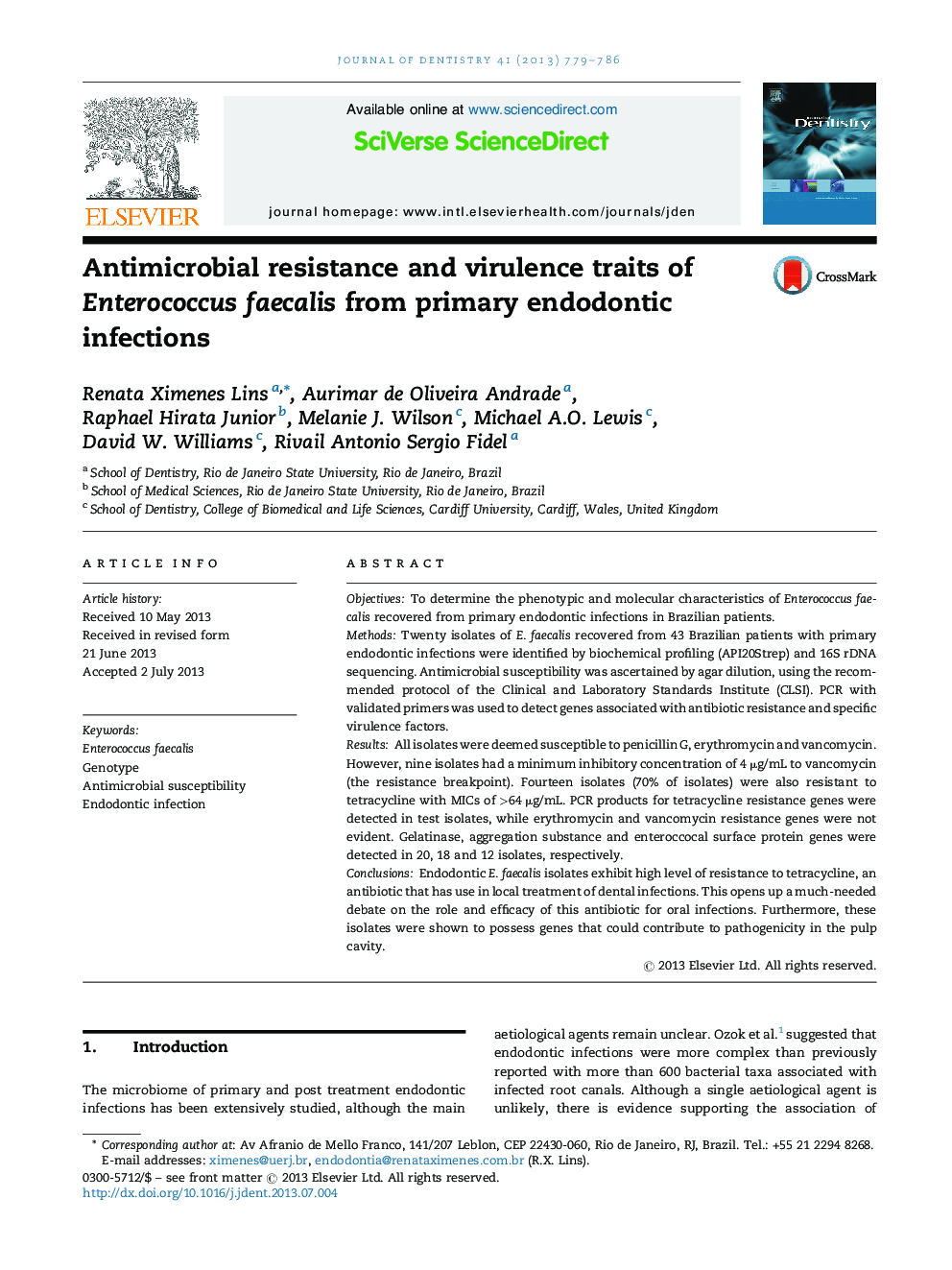| کد مقاله | کد نشریه | سال انتشار | مقاله انگلیسی | نسخه تمام متن |
|---|---|---|---|---|
| 6053334 | 1197027 | 2013 | 8 صفحه PDF | دانلود رایگان |
ObjectivesTo determine the phenotypic and molecular characteristics of Enterococcus faecalis recovered from primary endodontic infections in Brazilian patients.MethodsTwenty isolates of E. faecalis recovered from 43 Brazilian patients with primary endodontic infections were identified by biochemical profiling (API20Strep) and 16S rDNA sequencing. Antimicrobial susceptibility was ascertained by agar dilution, using the recommended protocol of the Clinical and Laboratory Standards Institute (CLSI). PCR with validated primers was used to detect genes associated with antibiotic resistance and specific virulence factors.ResultsAll isolates were deemed susceptible to penicillin G, erythromycin and vancomycin. However, nine isolates had a minimum inhibitory concentration of 4 μg/mL to vancomycin (the resistance breakpoint). Fourteen isolates (70% of isolates) were also resistant to tetracycline with MICs of >64 μg/mL. PCR products for tetracycline resistance genes were detected in test isolates, while erythromycin and vancomycin resistance genes were not evident. Gelatinase, aggregation substance and enteroccocal surface protein genes were detected in 20, 18 and 12 isolates, respectively.ConclusionsEndodontic E. faecalis isolates exhibit high level of resistance to tetracycline, an antibiotic that has use in local treatment of dental infections. This opens up a much-needed debate on the role and efficacy of this antibiotic for oral infections. Furthermore, these isolates were shown to possess genes that could contribute to pathogenicity in the pulp cavity.
Journal: Journal of Dentistry - Volume 41, Issue 9, September 2013, Pages 779-786
